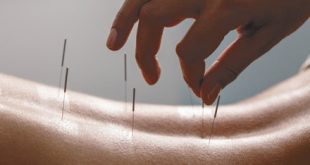By Florida Gulf Coast Ear, Nose & Throat


Sleep apnea is a condition in which you repeatedly and temporarily stop breathing during sleep. The most common type of sleep apnea is obstructive sleep apnea (OSA). Obstructive sleep apnea occurs when muscles in the upper airway relax, narrowing the airway and blocking the flow of air to the lungs. Central sleep apnea occurs when your brain fails to send the correct signals that control breathing. Complex sleep apnea is a combination of both conditions.
Almost everyone experiences apnea (brief cessation in breathing) during sleep. It’s normal to have up to five apneas an hour. The number of apneas per hour determines the severity of your condition:
. Mild sleep apnea: 5-14 per hour
. Moderate sleep apnea: 15-29 per hour
. Severe sleep apnea: 30 or more per hour
The occurrence of sleep apnea in the U.S. adult population is increasing, affecting at least 25 million adults in the U.S., according to the National Healthy Sleep Awareness Project. Because sleep apnea can lead to high blood pressure, heart disease, Type 2 diabetes, stroke, depression, and more, it is critical that you receive proper diagnosis and treatment.
Sleep apnea is a brief cessation in breathing during sleep due to blocked airway or faulty brain signals.
Signs and Symptoms of Sleep Apnea
People with OSA often suffer from snoring, morning headaches, and excessive daytime sleepiness. A major sign of OSA is being awoken by gasping for air or a feeling of choking.
Other signs include:
. Waking up frequently to use the bathroom
. Restless sleep
. Nonrestorative sleep
. Dry or sore throat
. Short-term memory issues
. Difficulty concentrating and focusing
. Morning confusion
. Depression and anxiety
. Sexual dysfunction, including impotence and decreased libido
. Gastroesophageal reflux
. Hypertension
Causes of Obstructive Sleep Apnea
OSA can be caused by any number of – or a combination of – factors, including:
. Excess weight
Fat and tissue around your upper airwayairway can obstruct your breathing.
. Middle age
The risk of OSA increases with age, although plateau around the age of 65.
. Being male
Men are two to three times more likely to have sleep apnea than are women.
. Medical conditions
Conditions including congestive heart failure, high blood pressure, type 2 diabetes, Parkinson’s disease, hormonal disorders, prior stroke, and as and chronic lung diseases such as asthma can increase your risk.
. Alcohol and sedatives
These relax all muscles in the body, including those in your throat and airway, causing tissue to collapseand and block airflow.
. Smoking
Smokers are three times more likely to have obstructive sleep apnea.
. A narrowed airway
A narrow throat or enlarges tonsils and adenoids can restrict airflow.
. Nasal congestion
Inability to breathe through your nose due because of nasalc ongestion means you must breathe through your mouth, making it more likely to suffer from OSA.
Smoking can increase your risk of OSA byup to three times.
Risks and Complications of Untreated Sleep Apnea
An immediate risk of sleep apnea is the rare possibility that breathing can cease long enough to cause brain damage or death. More common complications include:
Short-term complications
. Excessive daytime sleepiness
. Inability to concentrate and focus
. Lack of productivity
. Workplace and driving accidents
. Depression and anxiety
Long-term complications
. High blood pressure
. Heart disease
. Stroke
. Type 2 diabetes
. Metabolic syndrome
. Liver problems
. Surgery & anesthesia complications
Diagnosis of Obstructive Sleep Apnea
Your physician will evaluate your body mass index, neck circumference, and upper airway. If, after learning about your symptoms and conducting a physical evaluation, your physician suspects sleep apnea, you will be sent for a sleep study.
During a sleep study, you will be connected to equipment to measure:
. Sleep stages
. Heart rhythm
. Leg movements
. Airflow
. Breathing patterns and effort
. Oxygen saturation
. Breathing cessation episodes (apneas)
These measurements will confirm a diagnosis of sleep apnea and will indicate the type and severity of the condition so your physician can prescribe a proper treatment plan.
Treatment and Management of Obstructive Sleep Apnea
While OSA can’t be cured, it can be managed to improve sleep quality and minimize associated risks. Treatment depends on the severity of the condition and each individual’s overall health, and can include:
Continuous Positive Airway Pressure (CPAP)
The most common and effective nonsurgical treatment for sleep apnea is a Continuous Positive Airway Pressure (CPAP) machine. A CPAP machine creates a flow of air pressure when you inhale that is strong enough to keep your airway passages open. An individual wears a nasal or facial mask attached to a machine that delivers a flow of air with the proper air pressure to keep your airway open.
Bilevel Positive Airway Pressure (BiPAP)
A BiPAP machine is similar to a CPAP machine, but it has two pressure settings: one pressure for inhalation and a lower pressure for exhalation, allowing you to exhale more easily. CPAP and BiPAP machines address different needs, so your physician will recommend the machine that will most effectively work for your condition.
Oral Appliances
Oral appliances designed for sleep apnea bring the lower jaw forward and prevent the tongue from falling back and blocking the airway.
Inspire Procedure
Inspire is the only FDA-approved obstructive sleep apnea treatment that works inside your body while you sleep to treat the root cause of sleep apnea. It’s a small device placed during a same-day, outpatient procedure. When you’re ready for bed, simply click the remote to turn Inspire on. Inspire opens your airway, allowing you to breathe normally and sleep peacefully.
Lifestyle Changes
In addition to CPAP, BiPAP, oral appliances or Inspire, patients with moderate tosevere OSA as well as patients with mild OSA may benefit from lifestyle changes.
TRUST FLORIDA GULF COAST ENT WITH YOUR SLEEP HEALTH
Florida Gulf Coast ENT physicians are trained in sleep disorders and are experienced in diagnosing and treating Obstructive Sleep Apnea. With expert understanding of the anatomy and functioning of the throat and upper airway, our physicians combine knowledge and experience with innovative technology to minimize health risks associated with OSA and improve sleep quality.
Florida Gulf Coast Ear, Nose and Throat
Call 239-514-2225 today to see if you qualify?
(239) 514-2225
www.floridagulfcoastent.com
Our Team
Samuel L. Hill, III, MD, FACS, FAAOA
Patrick M. Reidy, MD
Leela Lavasani, MD, FACS
Benjamin Lehmkuhl, DO
Liuba Soldatova, MD
Sue-Lay Plasencia, DNP, APRN, NP-C
Nicole Gergenti, APRN, FNP-C
Billy Crooks, HAS
Shanai Hill, AU.D., CCC-A
Cynthia Drobiazgiewicz, AU.D., CCC-A
Nicole Diehl, AU.D., CCC-A, FAAA
 Southwest Florida's Health and Wellness Magazine Health and Wellness Articles
Southwest Florida's Health and Wellness Magazine Health and Wellness Articles

